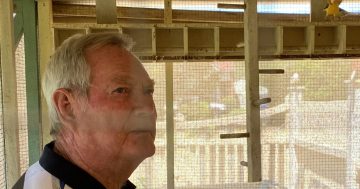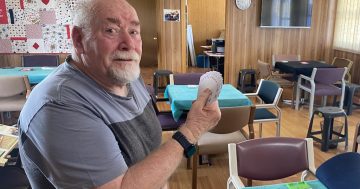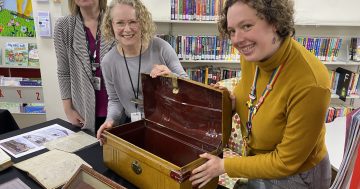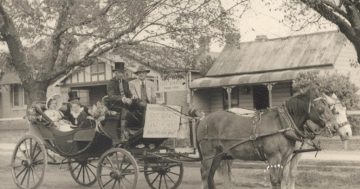
Inside one of the Goulburn Club’s outbuildings, a home often mistaken for stables. Photo: John Thistleton.
Volunteers do a remarkable job running the licensed Goulburn Club, one of the city’s earliest buildings and a present-day hub for musicians.
As a thank you to those volunteers and encouragement for new helpers, historian and former club president Rhys Howitt guided them on a “nooks and crannies” tour.
He encouraged them up ladders into dusty attics and down hallways into rooms with fireplaces and bells that once summoned stewards from the bar.
The tour began at the club’s rear in Market Street, where a two-storey stone home with a brick chimney and remnants of quality windows is sometimes mistaken as stables.
“It would have been whitewashed and in better condition than it is now, but I think it was one of the first houses in Goulburn and built in 1842,” Rhys said.
Dr Robert Waugh, a Scottish surgeon who established a medical hall in the main street, relocated to the Market Street site in the mid-1800s.
“He was apparently a very good chemist and had a sideline in making the best baking powder in the colony,” Rhys said.
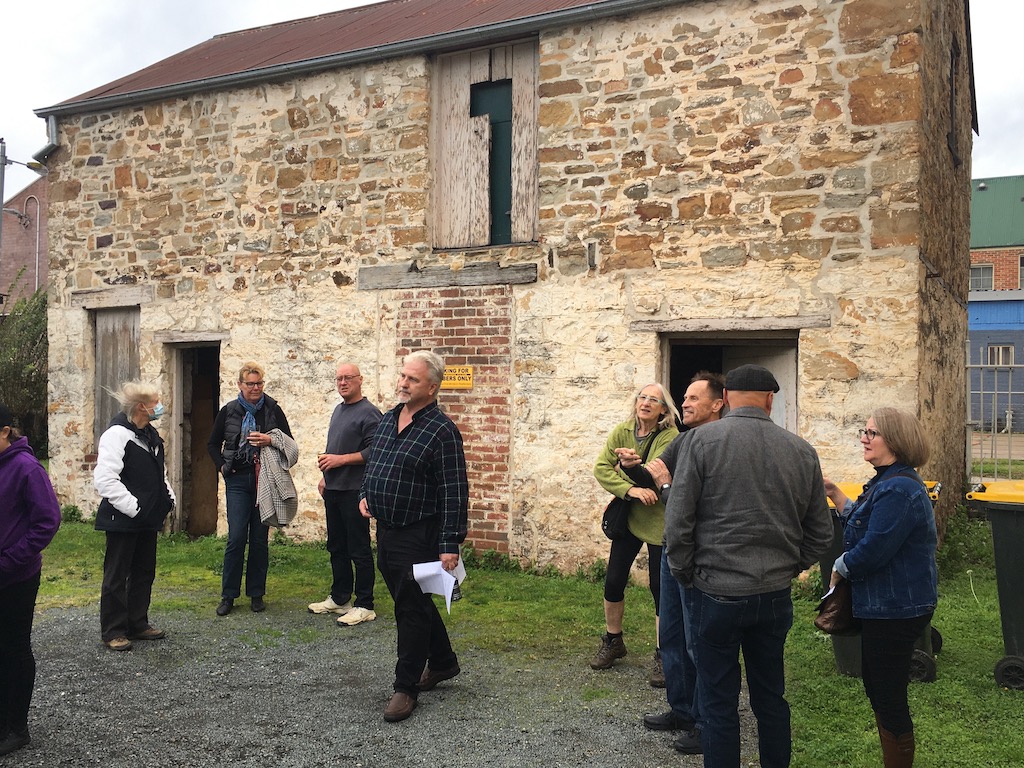
Former Goulburn Club president Rhys Howitt shares the building’s colourful past with fellow volunteers. Photo: John Thistleton.
The Goulburn Club, a “gentlemen-only club” for graziers to use during wool sales and other events in town, leased some of Dr Waugh’s building in about 1881.
“Apparently they were getting up to all sorts of mischief,” Rhys said.
“Women were not allowed, except for one open day each year when you could bring your family in for a bit of a look, just to prove you were not gambling and carrying on with ‘fast’ women.”
He said members even imported a slot machine from the United States in someone’s luggage before the one-armed bandits were legal in Australia.
Previously stables, the back rooms downstairs were used for other purposes, including a wine cellar in the days when alcohol sales were restricted and the club relied on an honour system.
For many years, the stone walls remained until plastered over to make bedrooms for visiting musicians.
“In 1906 they built over the rooms to make a dining room upstairs and stewards’ quarters,” Rhys said.
“The room is now called the Stewart room after William Stewart, the first club steward.”
Two dumbwaiters were added between the ground and second level to help run the original kitchen. One also accessed a weird underfloor room built when members extended the bar in 1939.
“Occasionally we have to operate the dumbwaiter to move people into that space to maintain the beer lines,” Rhys said.
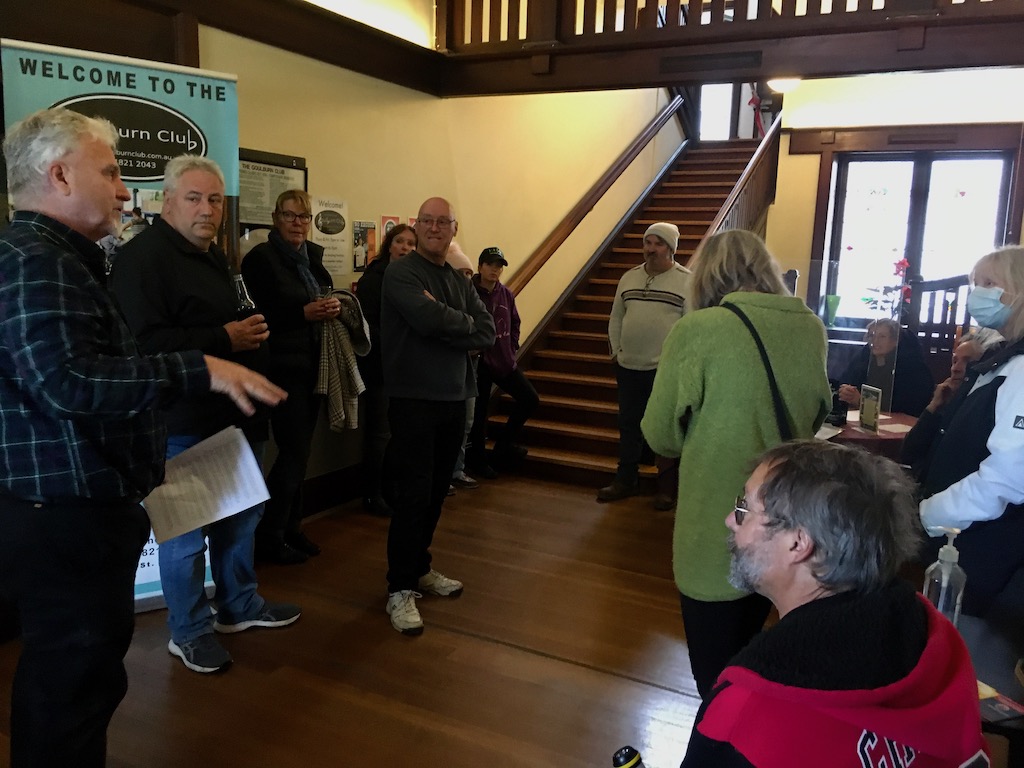
Rhys Howitt shows volunteers the main lobby and staircase inside the Goulburn Club. Photo: John Thistleton.
The all-male membership relented a little on its no-woman edict in 1973, allowing them to become associate members – provided they paid some money and did all the cooking and washing up.
Rhys said female membership coincided with the first ladies’ toilet, shared with the caretaker.
In 1978 women were allowed to use one of the billiards tables on Tuesdays, up to 5 pm. Then in 1988 “to enhance the membership numbers as well as the appearance”, women were allowed to become full members. But few joined because of expensive membership fees.
In 1993 the club recorded its first female committee member and welcomed its first female president in 2001.
The club has also seen changes structurally. A verandah added in 1881 when the Goulburn Club moved in was ordered to be removed by the council in 1962.
Despite acknowledging the verandah was sound, the council made the decision based on the fashion of the times.
“They allowed us to put it up again in 2003 and paid half the cost,” Rhys said.
The club also had to rebuild one building wing following a fire in 1916.
And there have been other changes over time, including moving the upstairs bar.
“We still have the receipt for the jarrah staircase as part of an art deco refit in 1927,” Rhys said.
“That’s essentially the club you see today, to a design by noted Goulburn architects Manfred and Son.”
The Goulburn Club on Market Street – A Short History by Rhys Howitt and club secretary Anna McCormack is available at the club for $15.







